Article's Content
Welcome to Volume 54!
Hope everyone is having a wonderful week and accomplishing great things! In my neck of the woods, fall is in full swing and I’m not even mad about it!
But enough about me, let’s get to the important stuff.
Since you’re receiving this email, you probably already know the power of distribution. But do you know how to take it to the next level?
By tweeting more? By creating more content? By running more ads?
All of those could be viable options, but a full distribution plan that works for one brand might not for the next. That’s why it is so important to do the research and build out a distribution engine that works for your niche, brand, or idea!
Not sure where to start?
Lucky for you, the newest edition of the Distribution Challenge has launched. In this course, Ross outlines his mighty distribution engine across 12 lessons. And shows you how to create your own engine that leads to more reach and better results from the content you’ve already created!
Before we dive into the rest of the newsletter, here’s a peek at what’s to come:
One Of The Big 4 Goes Remote
A few weeks ago the accounting giant PwC signaled to its 40k+ employees that they could permanently work remotely.
Sounds great right? A legacy brand announcing that their massive workforce can work from anywhere in the world.
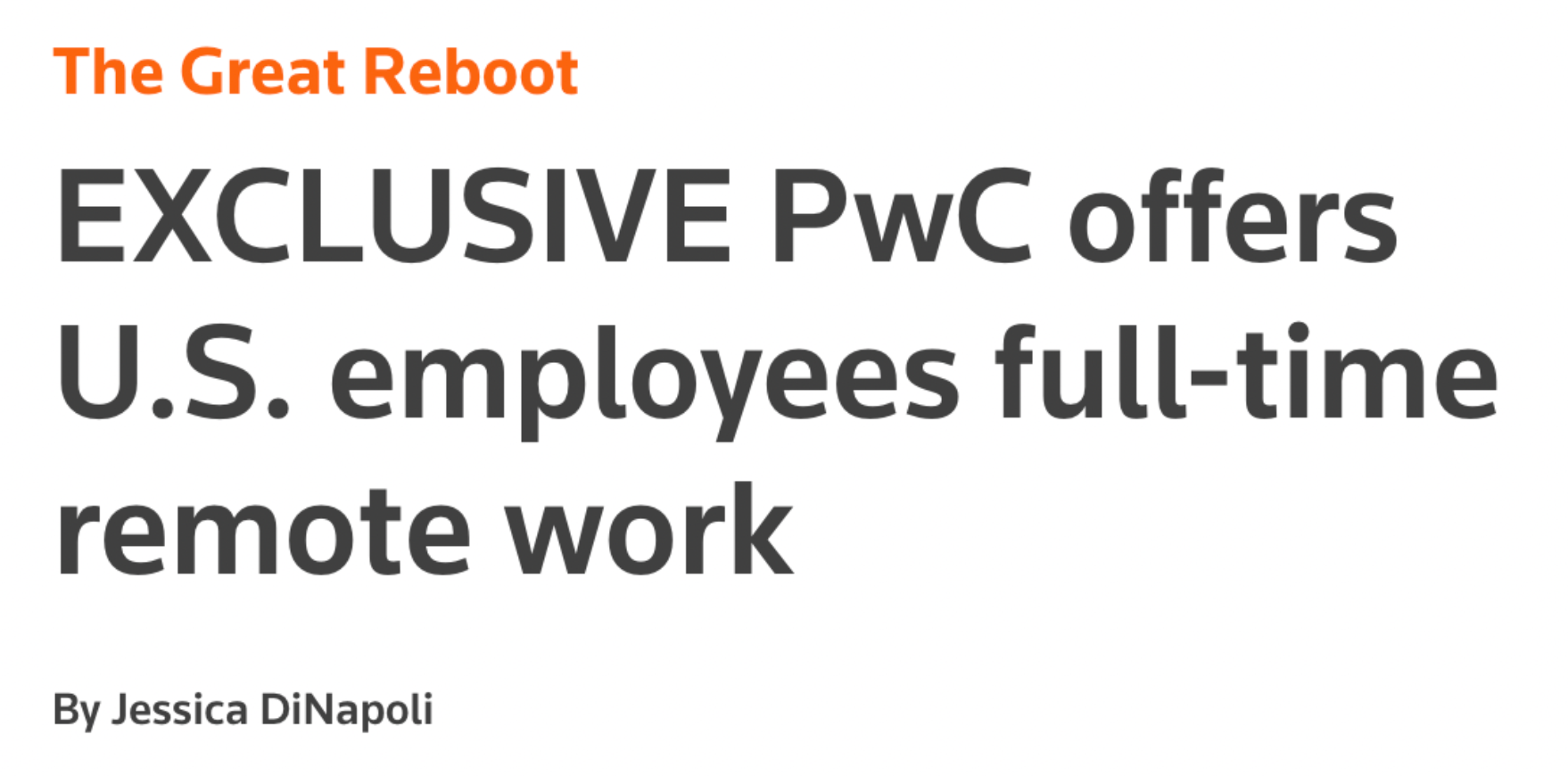
But in the same breath, PwC said that salaries could be adjusted if their employees moved to a city with a lower cost of living.
That said, this is a massive win for the remote work future that we seem to be hurtling towards.
They were one of the first of the Big 4 accounting firms to announce plans for their employees to work from home. I’m hoping that this forces some of the other massive brands in the industry to follow their lead.
According to a PwC survey, 65% of all US employees are trying to find a new job right now and 88% of executives are facing high employee turnover and churn.
PwC stated that they are hoping this shift to remote work will not only help retain their employees but attract a whole new generation to their company.
Recently, American Express also enacted a new policy that allows their hybrid and fully remote workers to work from anywhere in the world for 4 weeks!
This “work from anywhere” policy will let those hybrid workers, who usually come into the office a few days a week, work fully remotely from anywhere.
It’s really starting to sound like giant brands are starting to wake up to the future of work!
At Foundation we have been a fully remote company since our founding, and that’s not going to change. I’m currently in Kansas City, Ross Simmonds is in Halifax and the rest of the team is scattered across the whole world. Yes, the whole world!
Over the past few years, we have been able to scale quicker, retain better talent, and create content that influences culture because of that remote first mindset.
If that sounds like something you would be interested in becoming a part of, we are hiring for a ton of different roles right now! You can check out all of our open positions here.
Key Takeaways
- PwC will allow 40k+ more employees to work from home indefinitely.
- 65% of all US employees are trying to find a new job right now and 88% of executives are facing high employee turnover.
- American Express has instituted a “work from anywhere” policy that will let hybrid and workers work from anywhere in the world.
Is Creating Content Harder In 2021?
One of my favorite days of the year is when Andy Crestodina and his team publish new data on the most impactful content and blogging strategies.
This is the 8th straight edition of this report, so they know what they are doing! And this year it is packed full of interesting data nuggets from over 1000 content marketers and creators.

Last year I wrote a thread about all the findings and data points, but this year I thought I would just highlight some of the most interesting findings and quotes. So let’s jump right into it!
This year they found that blogging seems to be getting harder, with fewer people reporting strong marketing results.
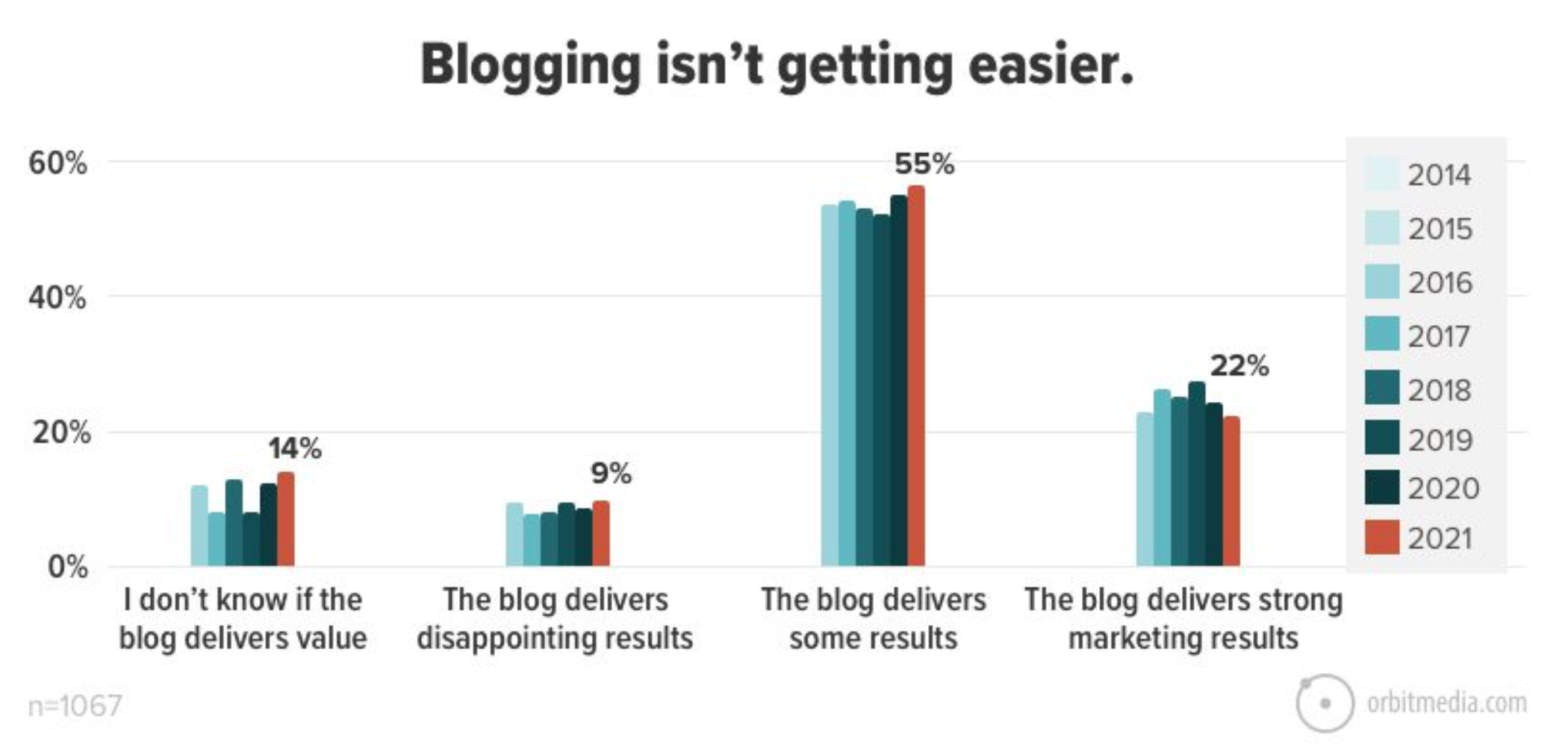
This makes a lot of sense when you step back and look at the media landscape. There are hundreds of other types of content and millions of creators fighting for a finite amount of attention. I suspect that as we move further into the future, this metric will continue to drop.
On the other hand, 77% of those same respondents said that blogging still is driving results for their business.
Additionally, just because they aren’t seeing results from traditional blogging, that doesn’t mean they aren’t seeing strong results from other types of content creation efforts. So don’t jump off the content creation ship just yet!
As someone who can whip out a 3000+ word blog post in a day or so, it was surprising to see that only 4% of creators write 3000+ word articles or posts.
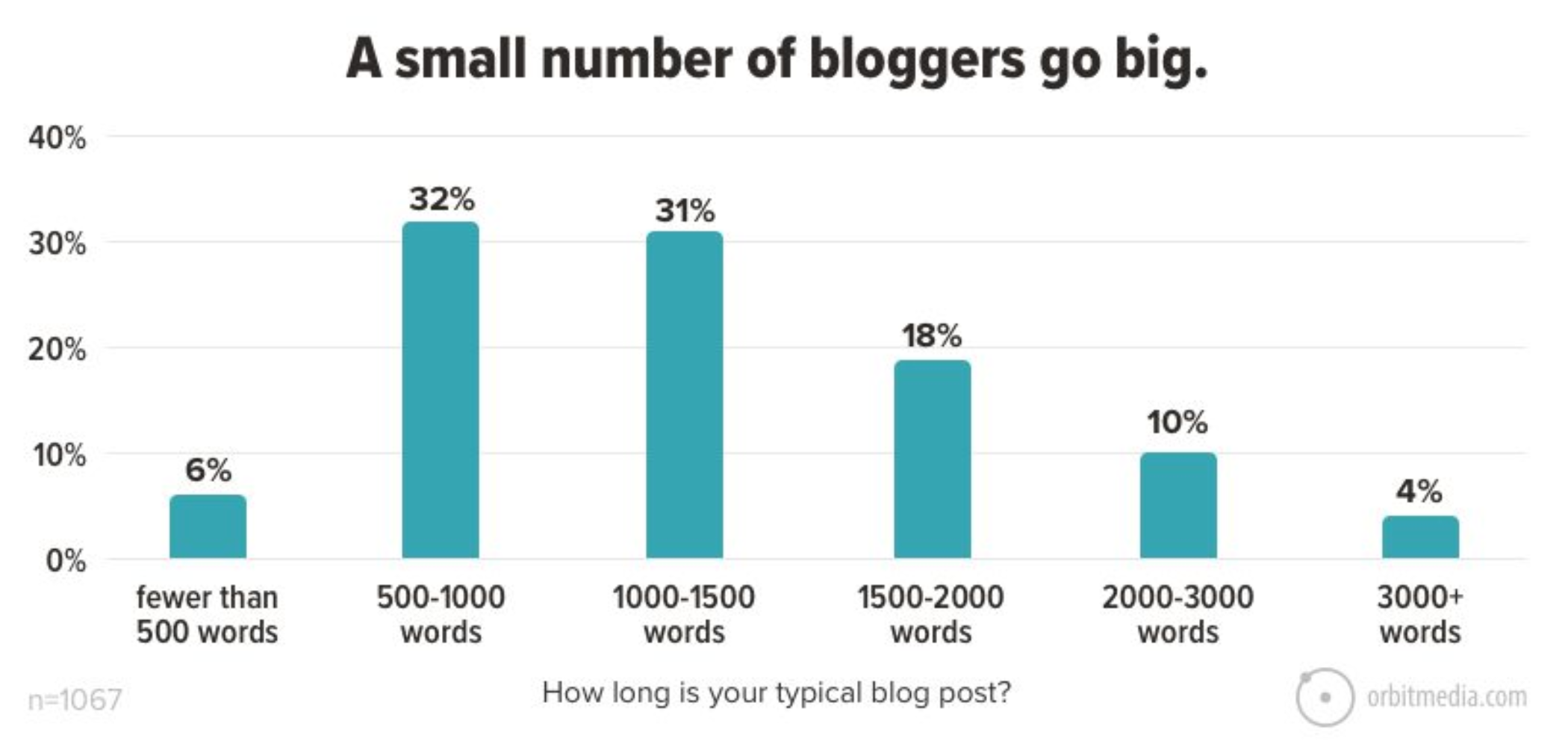
Almost all of our company teardowns clock in at least 2500 words, so we might just be an outlier. Like the respondents in this report, we also see overall results improve the more effort, time, and content we put into each article.
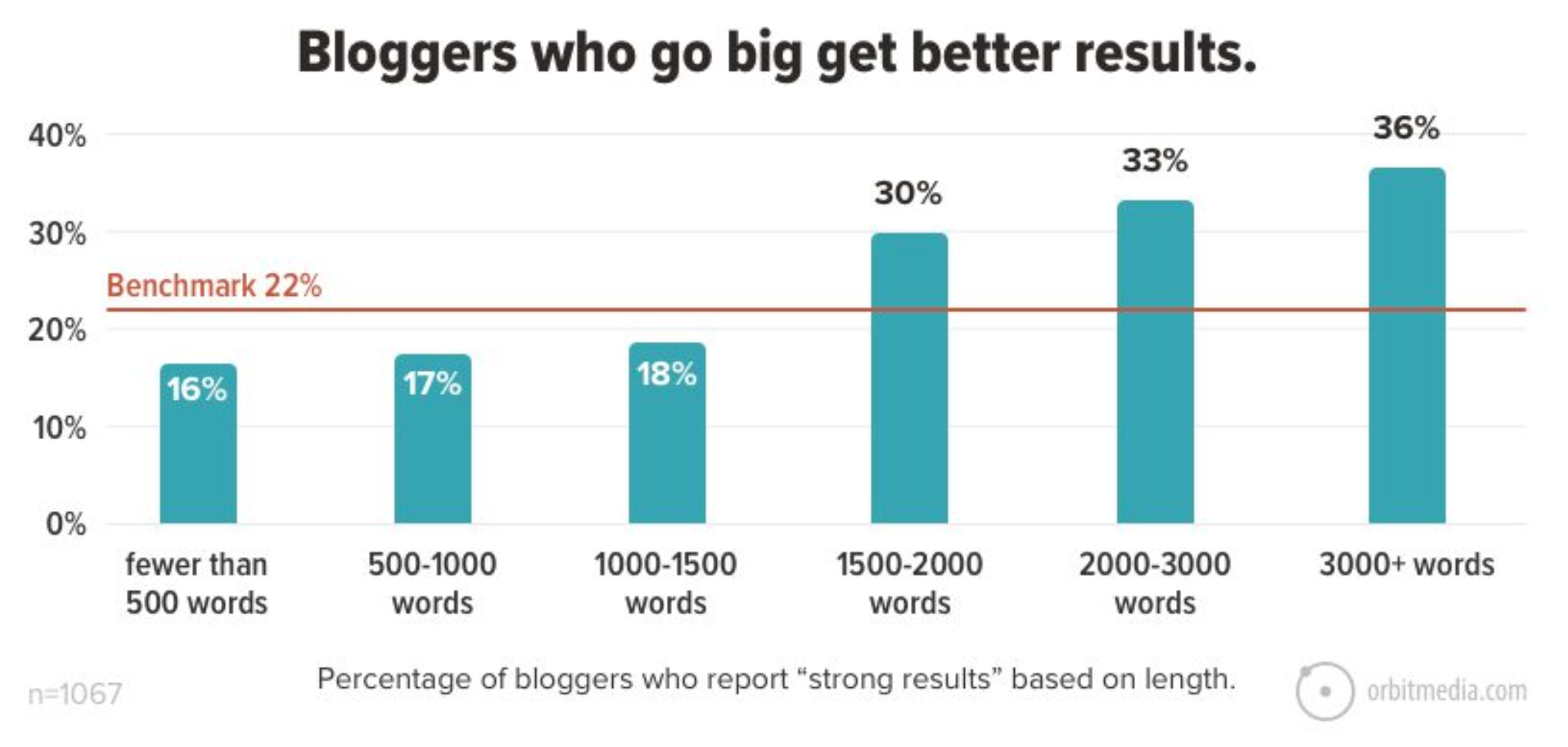
Brian Dean doesn’t seem too surprised with these findings either, saying:
“Long-form blog content was a “secret weapon” a few years ago. But word has spread. Which has led to more and more bloggers focusing on long-form content.”
As a visual content aficionado, I’m always curious about how other bloggers are using visuals, infographics, and images. It hurts me to see that only a small fraction of creators are using more than a handful of visuals in their content.
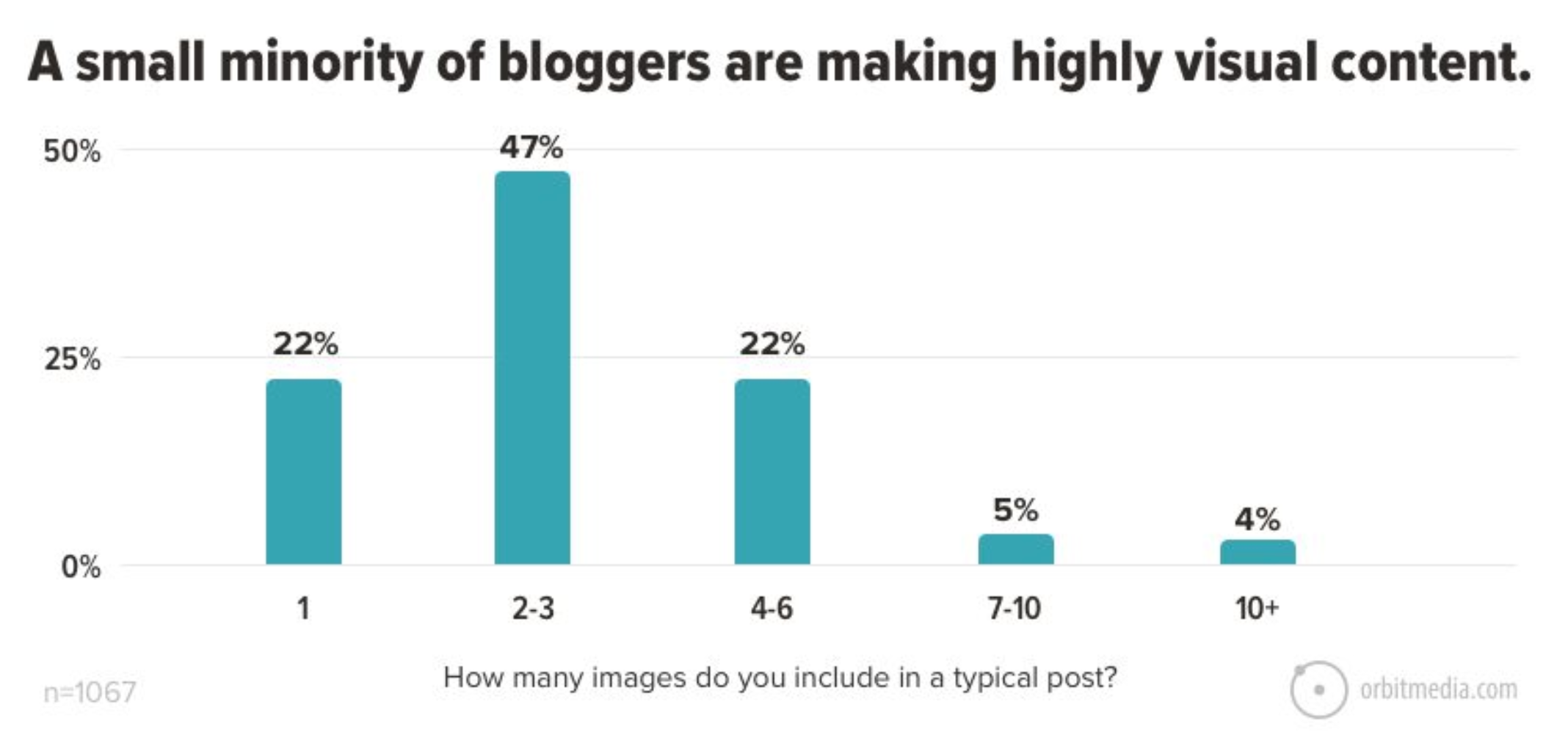
But those who do use a ton of visual content, report better content results…by a large margin:
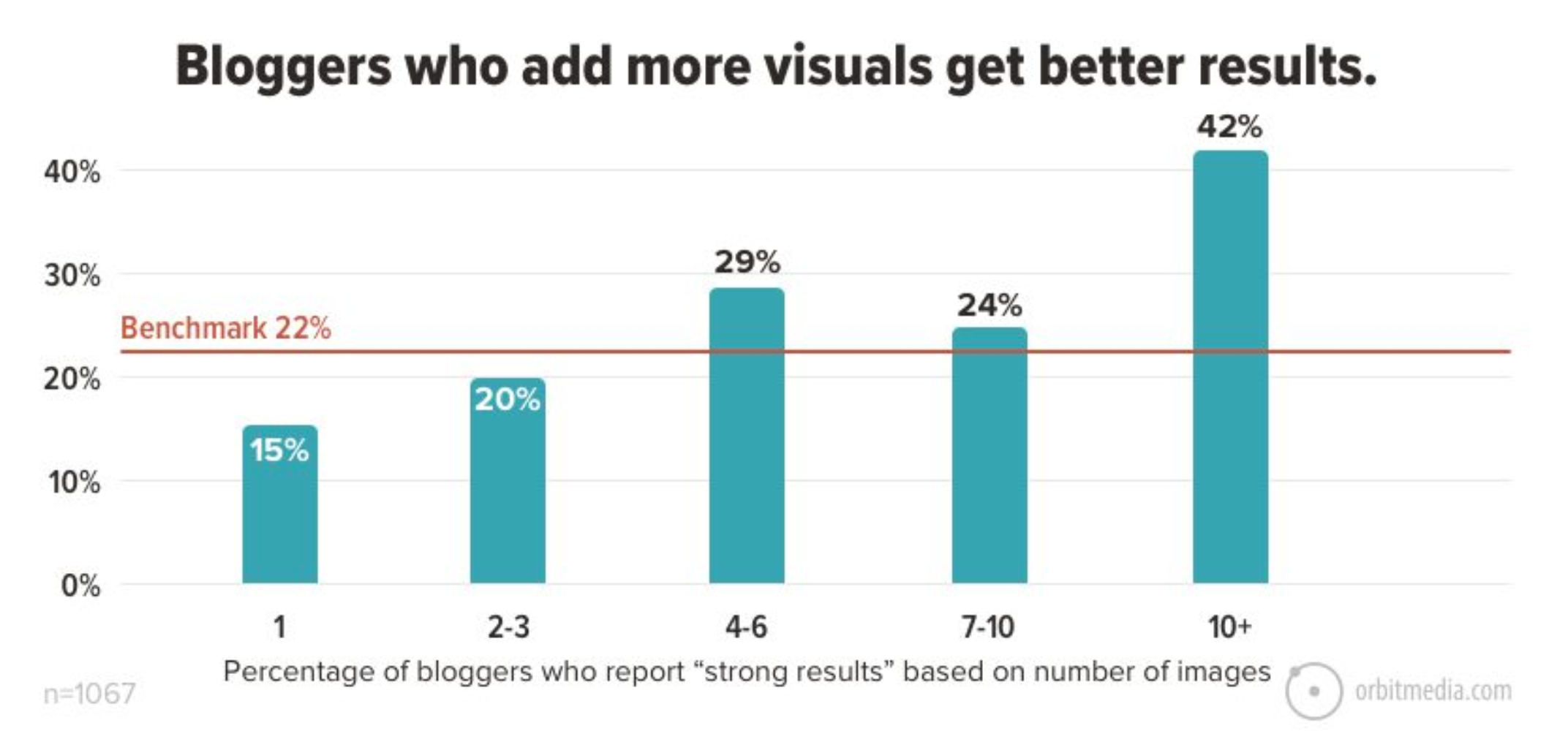
I think that this is a promising sign, but it also could be because the people who create more visuals spend more time both creating and distributing their content. They are “in it to win it” and likely have a high publishing standard for their content.
Speaking of distribution, it looks like the perceived effectiveness of Paid Marketing, Social Media and Email Marketing took a dip this year.
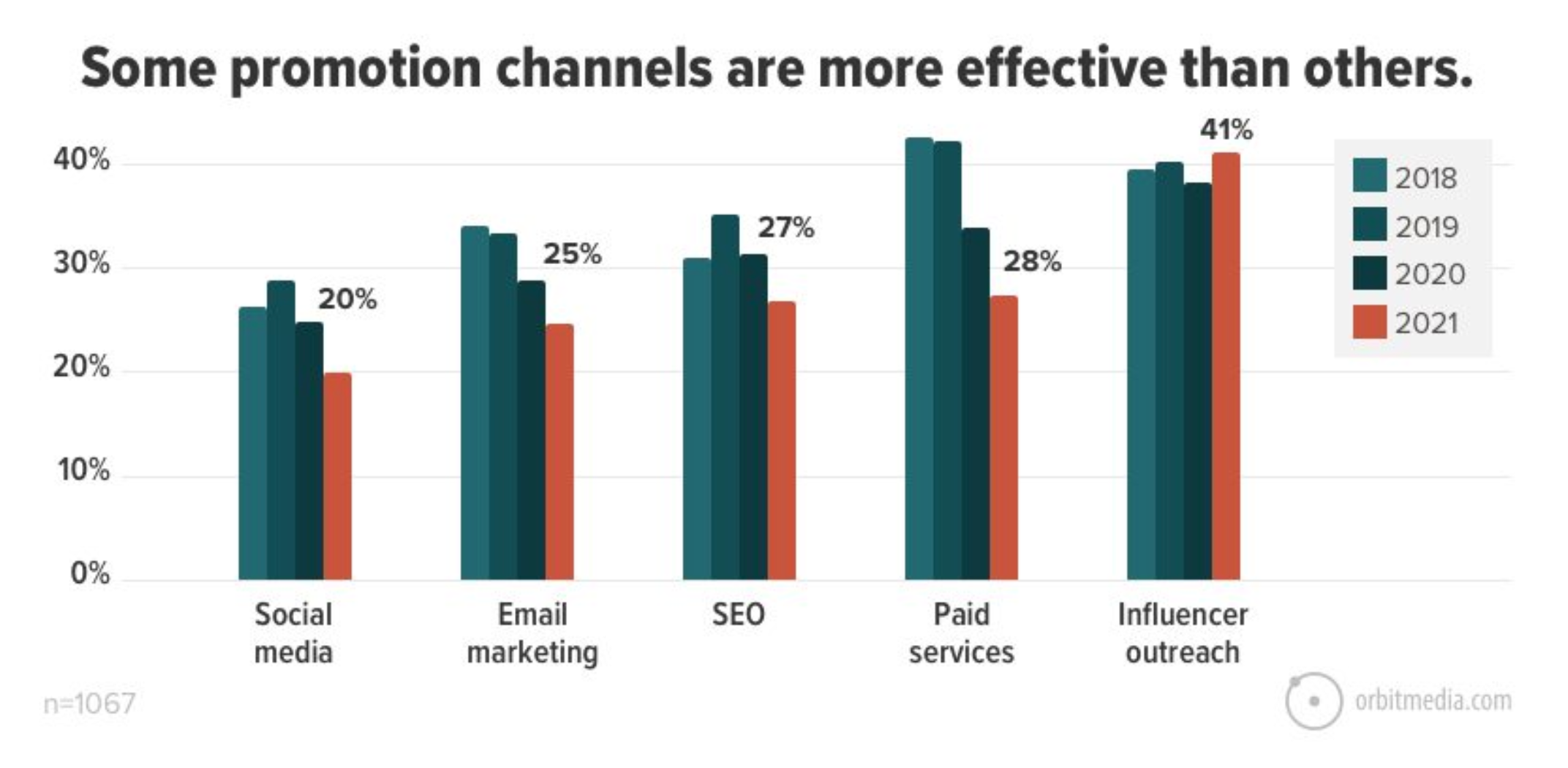
Our fearless leader Ross Simmonds has a great take on this:
“These numbers are fascinating to me because you can see the effectiveness of email marketing & social media dropping each year. Why is this?
It’s my belief that in 2018 both our inboxes and social media feeds weren’t as noisy as they are today. As these channels become noisier and noisier (and arguably even more competitive) the bar for standing out gets higher. It’s more difficult than ever to actually see strong results from these channels because they’re highly competitive and very noisy.
Does that mean these channels aren’t worth embracing? Not even close. It means we need to prioritize content excellence across the channels we choose and recognize that what worked in 2018 won’t work in 2023.”
Now if you need help building out your content distribution engine, be sure to sign up for our newest course from Ross and the Foundation Marketing team:
The Distribution Challenge

The Distribution Challenge is a 12-part course designed to help creators and marketers get more reach and better results from the content you’ve already created led by the King of Distribution himself, Ross Simmonds.
Key Takeaways
- 77% of the survey participants said that blogging still is driving results for their business.
- Content creators saw the most value from writing long-form posts over 3000 words.
- Articles that had 10+ images got the best results, even though many people only use a few images per article.
Fiverr Buys A Learning Platform
Recently, Fiverr bought the learning platform CreativeLive for an unknown amount.
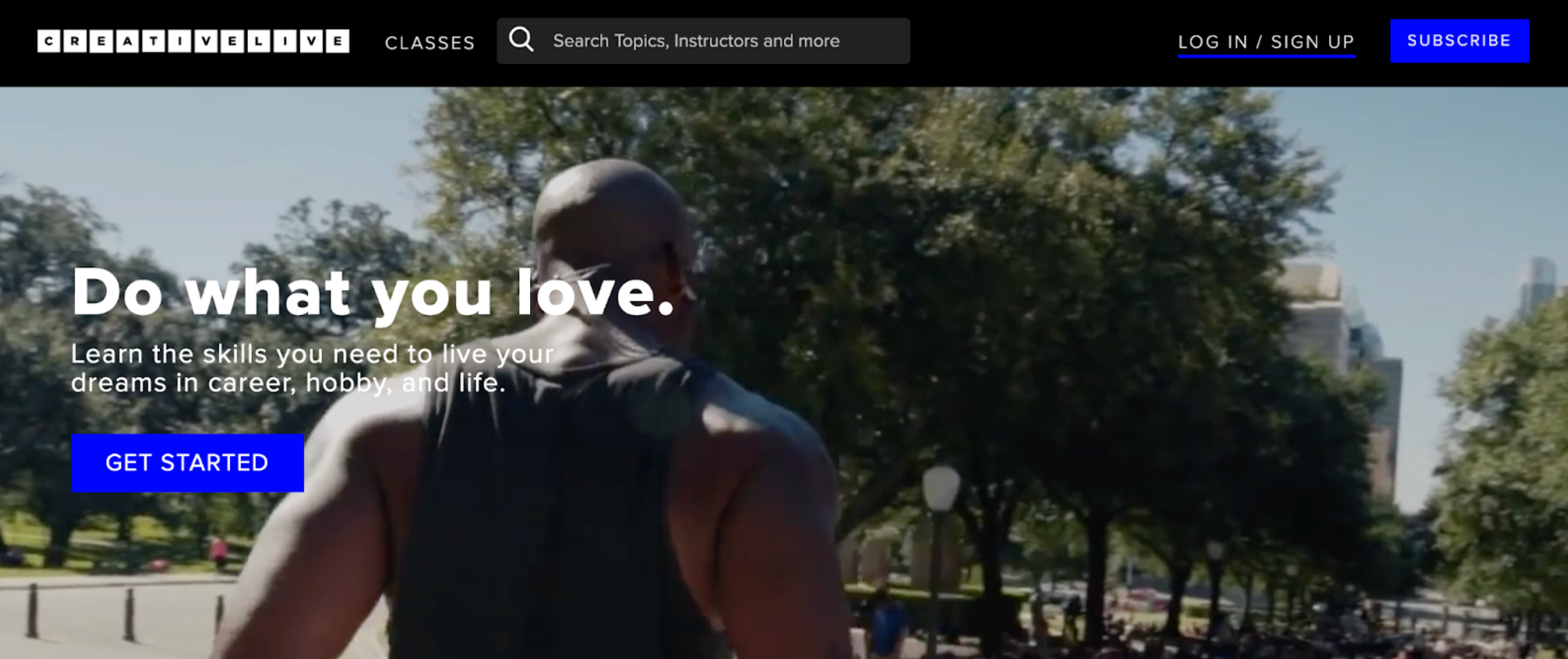
CreativeLive currently has about 10M+ users spread across the globe and features classes taught by some really heavy hitters.
![]()
The CreativeLive team will still operate as a separate entity for now, but the Fiverr Learn platform will be folded into their operations. Chase Jarvis will also continue to serve as CEO of the company that he founded back in 2010.
I think this is a brilliant move and have been a fan of Chase, and his vision, for a long time.
This acquisition by Fiverr signals that they are serious about investing in the people that make their platform so powerful. Freelancers who want to improve or expand their skills now have a great place to start!
Fiverr CEO, Micha Kaufman, reiterated this idea by saying:
“Fiverr is more than just a work platform, we fundamentally believe in supporting the entire freelance lifestyle, and that includes professional education and training.”
With all of these investments, Fiverr seems to be on the right track to position itself as an essential player in the new era of remote work too. Especially as the demand for talent continues to soar.
Key Takeaways
- Fiverr purchased the learning platform CreativeLive for an unknown amount.
- CreativeLive and Fiverr Learn will merge operations.
- This acquisition shows that Fiverr is serious about investing in the people that make their platform great
OTHER NEWS OF THE WEEK:
🔒 Expensify prepares to go public as profits rebound after lockdown
🍎 Apple launches a new Macbook Pro, brings back our favorite ports
💼 For every open job, there are 0.8 people unemployed people to fill it
👀 After a rough couple of years, Facebook wants a new name
BRAIN FOOD OF THE WEEK:
I think one of the hardest things to do is actually schedule vacation time, especially at my last company. I literally left that company with….31 days unused of vacation.
There’s always something that needs to be done, and you keep putting vacation time off.
So in an attempt to be better at taking time off, especially because I have unlimited vacation days at Foundation, I have been reading a lot on nontraditional work techniques.
One of the most interesting approaches I stumbled upon was The Seventh Week Sabbatical. And honestly, I have been enamored with the idea since I found it.
The main idea behind this work style is that you work in 6-week sprints, and on the 7th week you take a vacation or rest.
This is not a new idea, the founder, Sean McCabe starting implementing this idea into his life all the way back in 2014.
But I think as our work life and real life start to overlap as more brands embrace remote work, this is a great way to take back some of your free time.
I know not everyone can afford to take an entire week off. However, you could schedule a Monday off every 6 weeks or even just duck out of the office a little early on Friday.
This thinking is more about setting real boundaries between your work and personal life. When those boundaries start to break down, burnout is right around the corner.
So take some time this week to schedule some time off in your calendar, or just take a nice long walk around the block during lunch. It’s your free time, take it back.
TWITTER THREAD OF THE WEEK:
11 Writing Prompts To Help You Never Run Out Of Content Ideas By Amanda Natividad
WHAT WE’RE WIRED INTO THIS WEEK 🎧:
Friends by Francis and the Lights
These round-ups are brought to you by me, Ryan, at least for the next few weeks! ✌
Stay up to date with all of our latest findings by subscribing to our newsletter today. Signing up also gives you early access to Ross’ Tuesday essay full of exclusive industry insights.
Quick, do it now before the next drop!








